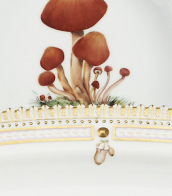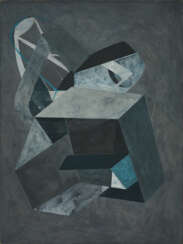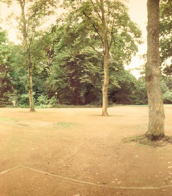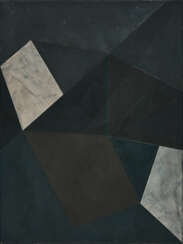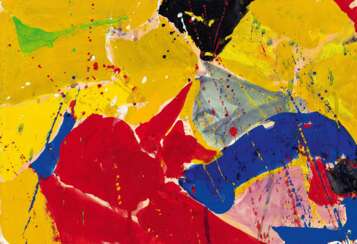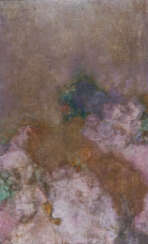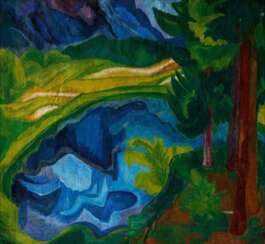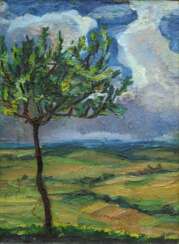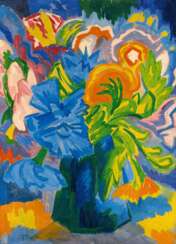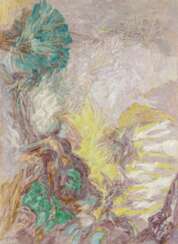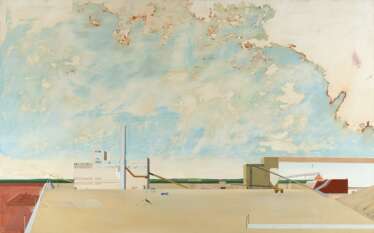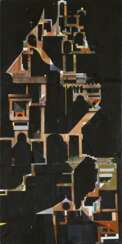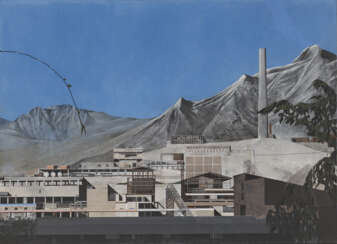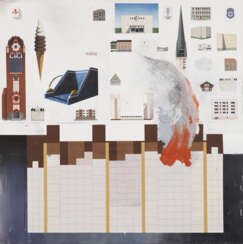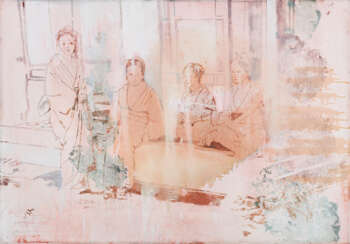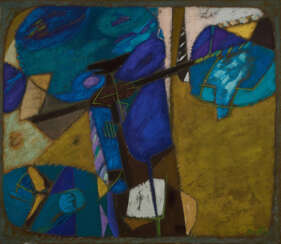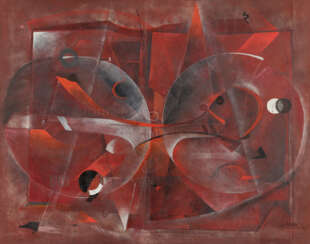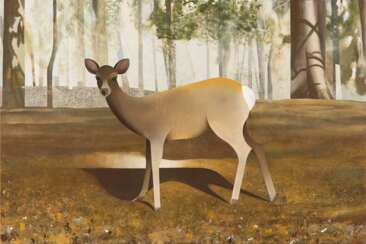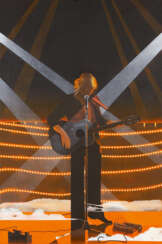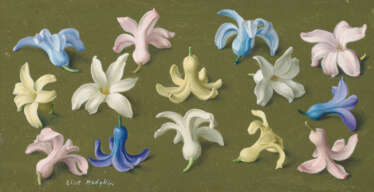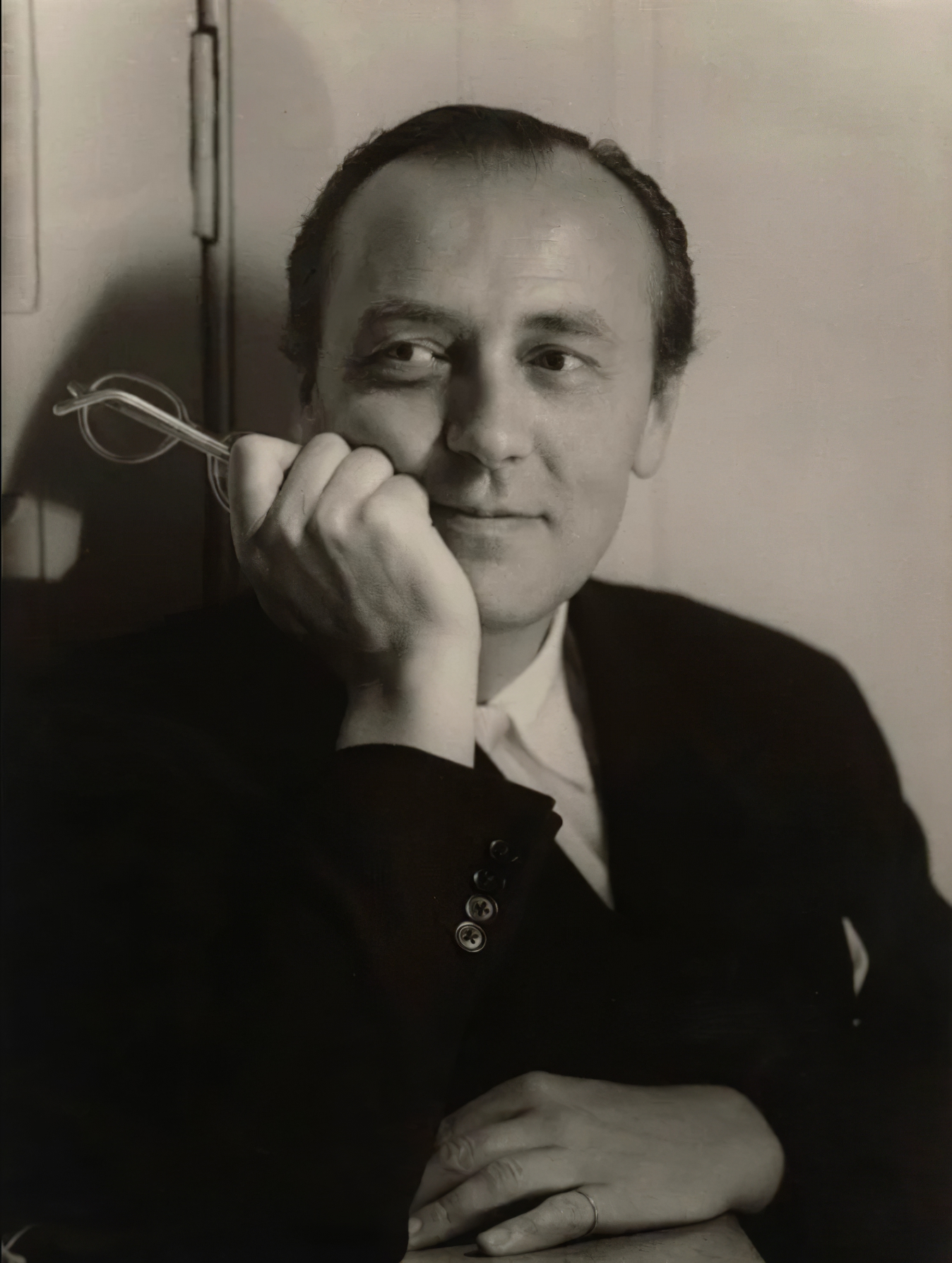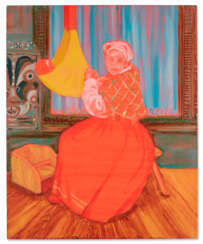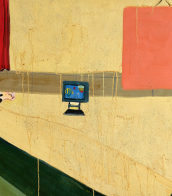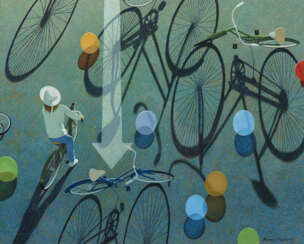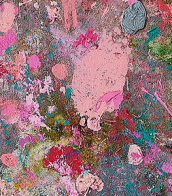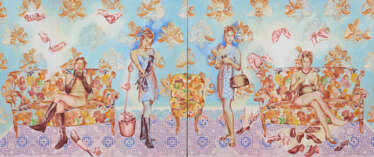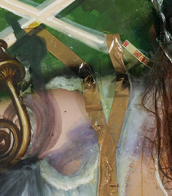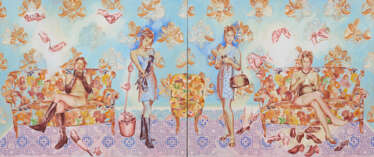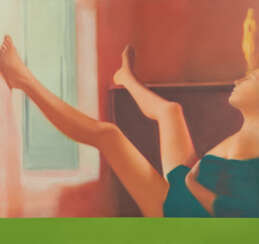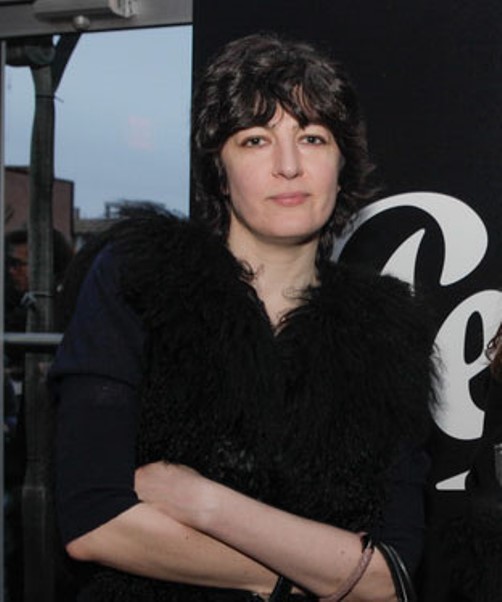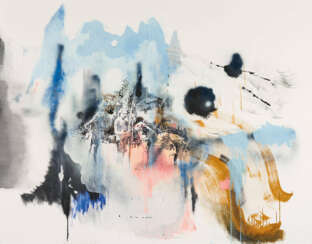egg tempera
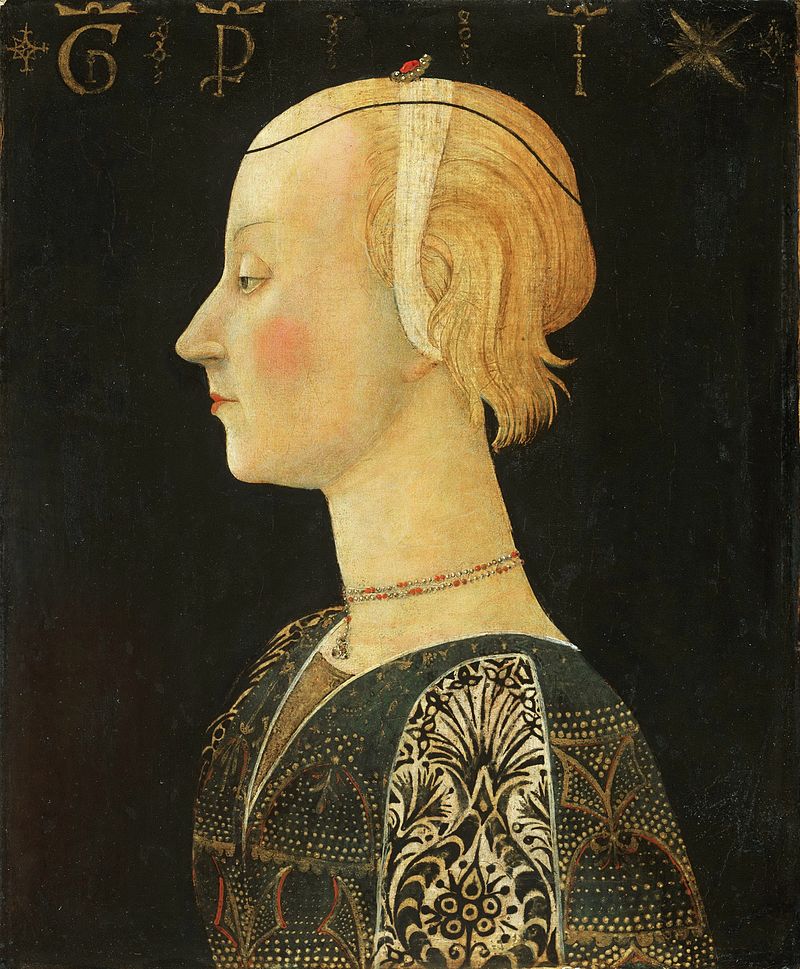
Giovanni di Ser Giovanni Guidi, more famously known as Scheggia, was an Italian painter whose contributions to the arts during the Renaissance period have carved him a distinct niche in art history. Born in Italy, Scheggia was a craftsman of narrative and decorative painting, specializing in altarpieces, cassone panels, and birth trays, which were popular in Florentine culture for their intricate storytelling and detailed artistry.
Scheggia is perhaps best known for his lively and detailed panels that graced the fronts of marriage chests, known as cassoni. These pieces were celebrated for their vivid depictions of allegorical and mythological scenes, showcasing Scheggia's skillful use of color and composition to bring tales to life. His work not only adorned the homes of the wealthy but also served as a testament to the rich cultural and artistic fervor of Renaissance Florence.
One of Scheggia's most notable works, the "Madonna of Humility with Angels," showcases his ability to blend divine and earthly realms in a harmonious composition that speaks volumes of his mastery over form and space. This, among other works by Scheggia, can be admired in museums across Italy, offering a glimpse into the vibrant Renaissance art scene.
For collectors and experts in art and antiques, Giovanni di Ser Giovanni Guidi represents an intriguing exploration into the less-trodden paths of Renaissance art. His paintings are a celebration of the era's innovative spirit, offering insights into the everyday lives, cultural practices, and artistic achievements of the time.
To delve deeper into the world of Renaissance art and uncover the gems of Giovanni di Ser Giovanni Guidi's legacy, signing up for updates is an essential step. This subscription ensures that enthusiasts and collectors are the first to know about new discoveries, exhibitions, and auction events related to Scheggia's work, providing exclusive opportunities to enrich their appreciation and collections of Renaissance art.

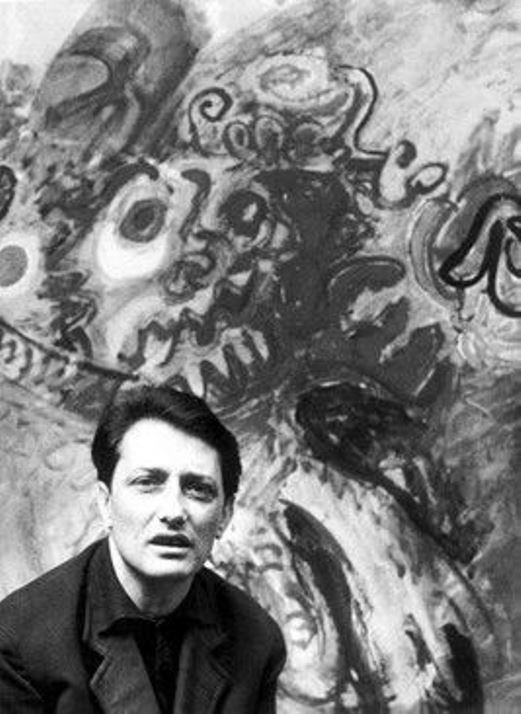
Tancredi Parmeggiani, or simply Tancredi, was an Italian painter.
He studied painting at the Academy of Fine Arts in Venice. Along with Mario Deluigi and Lucio Fontana, Tancredi Parmeggiani is considered one of the most important representatives of Spazialismo ("Spatial Movement"). This concept of art was developed by Fontana, in which he saw a new spatial concept of technology and science as the basis of modern art. Tancredi Parmeggiani was also convinced that the surface of the image should cross the boundaries of two-dimensionality to open new dimensions through color and time and find new artistic solutions.
The famous collector Peggy Guggenheim was his patron and promoted his lyrical-abstract works to major American museums. Tancredi's work was critically acclaimed, he actively participated in many exhibitions in Italy, London, Paris and New York, and was the recipient of several prestigious awards. In 1964 he took part in the Venice Biennale, and in September of the same year, at the age of 37, he took his own life in Rome.
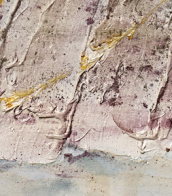
Samuel Lewis Francis, an American painter and printmaker, was known for his pivotal role in postwar American painting and his contributions to the Abstract Expressionism and Color Field painting movements. Born in San Mateo, California, Francis' early life was marked by a deep personal loss and a significant injury during his service in the Army Air Corps, which led him to pursue painting while recovering in a hospital. His work, characterized by splashes of bright contrasting colors against expansive white canvases, drew international acclaim, particularly in Europe and Japan, underscoring his influence on the global art scene.
Francis' art evolved through various phases, from monochromatic works to vibrant, large-scale pieces, and was deeply influenced by his time in Paris and Japan, reflecting elements of Tachisme and possibly Zen Buddhism. Notable for creating large murals and his "Edge" series, Francis also founded The Lapis Press, further contributing to the art community by producing visually compelling texts. Despite facing health challenges towards the end of his life, he remained prolific, leaving behind a legacy celebrated through the Sam Francis Foundation, which aims to perpetuate his creative legacy.
Francis' artworks are held in prestigious collections worldwide, including The Metropolitan Museum of Art, The Museum of Modern Art, New York, and the Centre Pompidou-Musee National d'Art Moderne, Paris, highlighting his enduring influence on contemporary art. His auction records and continued recognition in solo exhibitions posthumously underscore the lasting impact of his work on both collectors and the art community.
For those passionate about modern art and its history, staying informed about Samuel Lewis Francis' contributions and the ongoing exhibitions of his works can be enriching. Sign up for updates related to Francis to ensure you don't miss out on new sales and auction events showcasing his vibrant legacy.

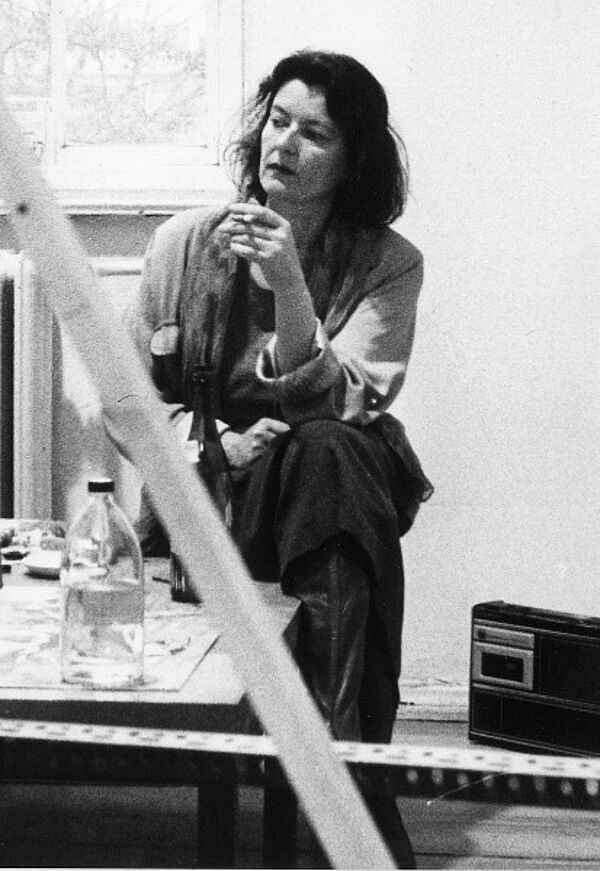
Sarah Schumann was a German painter. She concentrated on painting and in 1953 had her first solo exhibition at Zimmergalerie Franck in Frankfurt am Main. She joined the women's group "Bread and Roses". During that time she worked on three films by director Helke Sander. In 1977 she was one of the initiators of the exhibition Female Artists International 1877-1977 in Frankfurt am Main and painted large portraits of women.
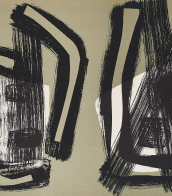
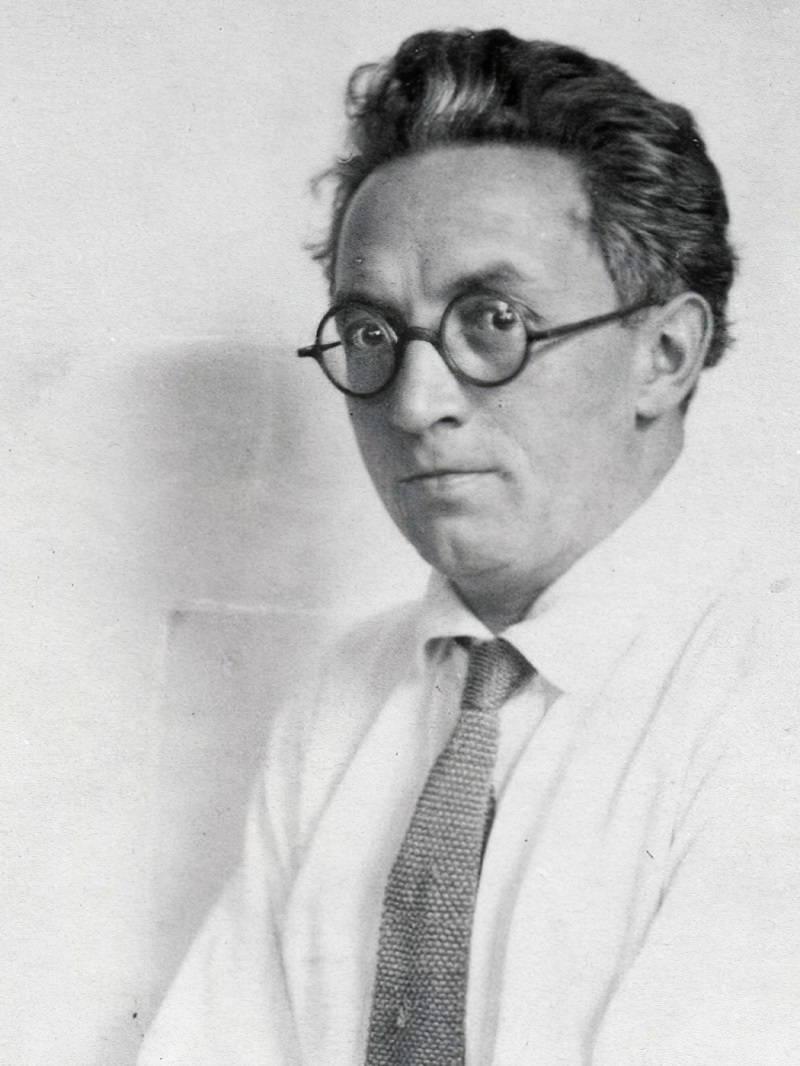
Fritz Schaefler was a German graphic artist. He was known for his expressionist paintings, drawings, and prints.
Schaefler studied at the Academy of Fine Arts in Munich and later taught at the Folkwang University of the Arts in Essen. His early work was influenced by the German Expressionist movement, and he was associated with the group "Die Brücke" (The Bridge), which included other notable artists such as Ernst Ludwig Kirchner and Emil Nolde.
Schaefler's work is characterized by bold, vibrant colors and energetic brushstrokes. He often depicted landscapes, cityscapes, and still-life scenes, infusing them with a sense of emotion and vitality. He also produced a significant body of graphic work, including woodcuts and lithographs.
Schaefler's work was exhibited extensively during his lifetime, including at the Venice Biennale, the Stedelijk Museum in Amsterdam, and the Museum of Modern Art in New York. He was also awarded numerous honors and awards for his work.


Fritz Schaefler was a German graphic artist. He was known for his expressionist paintings, drawings, and prints.
Schaefler studied at the Academy of Fine Arts in Munich and later taught at the Folkwang University of the Arts in Essen. His early work was influenced by the German Expressionist movement, and he was associated with the group "Die Brücke" (The Bridge), which included other notable artists such as Ernst Ludwig Kirchner and Emil Nolde.
Schaefler's work is characterized by bold, vibrant colors and energetic brushstrokes. He often depicted landscapes, cityscapes, and still-life scenes, infusing them with a sense of emotion and vitality. He also produced a significant body of graphic work, including woodcuts and lithographs.
Schaefler's work was exhibited extensively during his lifetime, including at the Venice Biennale, the Stedelijk Museum in Amsterdam, and the Museum of Modern Art in New York. He was also awarded numerous honors and awards for his work.


Fritz Schaefler was a German graphic artist. He was known for his expressionist paintings, drawings, and prints.
Schaefler studied at the Academy of Fine Arts in Munich and later taught at the Folkwang University of the Arts in Essen. His early work was influenced by the German Expressionist movement, and he was associated with the group "Die Brücke" (The Bridge), which included other notable artists such as Ernst Ludwig Kirchner and Emil Nolde.
Schaefler's work is characterized by bold, vibrant colors and energetic brushstrokes. He often depicted landscapes, cityscapes, and still-life scenes, infusing them with a sense of emotion and vitality. He also produced a significant body of graphic work, including woodcuts and lithographs.
Schaefler's work was exhibited extensively during his lifetime, including at the Venice Biennale, the Stedelijk Museum in Amsterdam, and the Museum of Modern Art in New York. He was also awarded numerous honors and awards for his work.

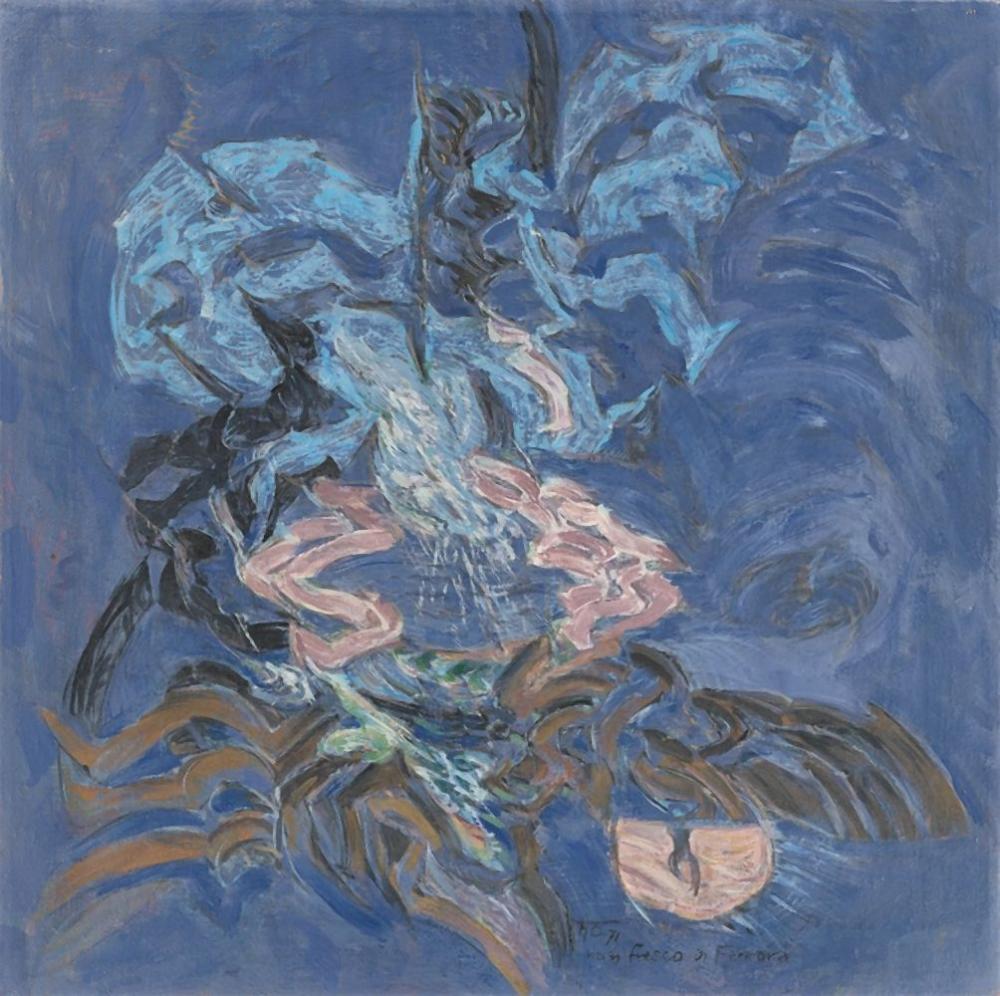
Hann Trier was a German abstract expressionist watercolourist and graphic artist. Hann Trier is best known for his giant ceiling paintings in the Charlottenburg Palace. He was the older brother of the art historian Eduard Trier (1920-2009).

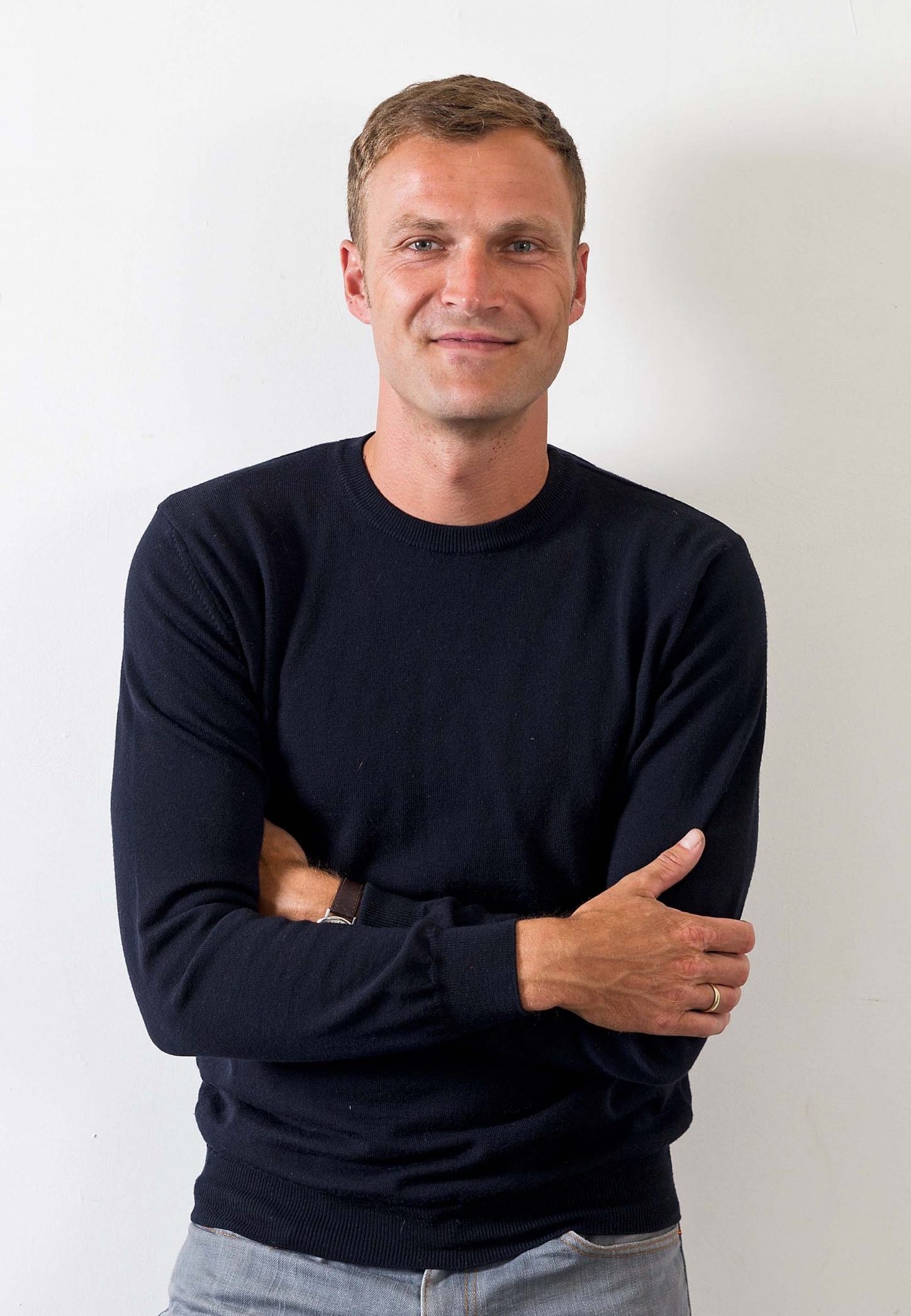
Robert Seidel is a contemporary German artist who works in the fields of experimental film, installation, public art, image-making, performance and sound.


Robert Seidel is a contemporary German artist who works in the fields of experimental film, installation, public art, image-making, performance and sound.


Robert Seidel is a contemporary German artist who works in the fields of experimental film, installation, public art, image-making, performance and sound.
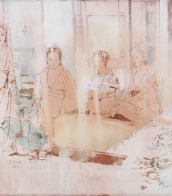

Robert Seidel is a contemporary German artist who works in the fields of experimental film, installation, public art, image-making, performance and sound.

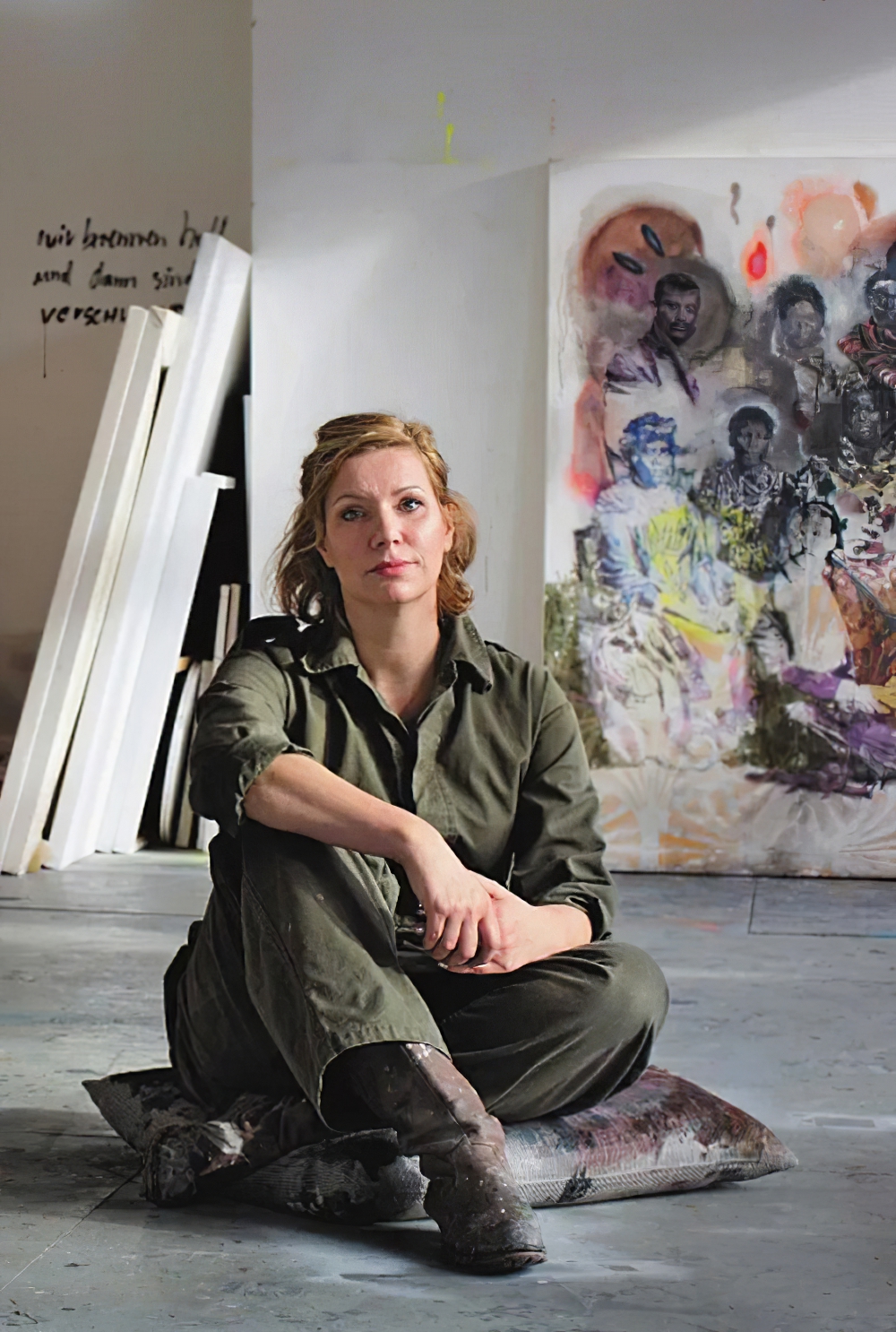
Miriam Vlaming is a contemporary German artist. She lives and works in Berlin.


Fritz Schaefler was a German graphic artist. He was known for his expressionist paintings, drawings, and prints.
Schaefler studied at the Academy of Fine Arts in Munich and later taught at the Folkwang University of the Arts in Essen. His early work was influenced by the German Expressionist movement, and he was associated with the group "Die Brücke" (The Bridge), which included other notable artists such as Ernst Ludwig Kirchner and Emil Nolde.
Schaefler's work is characterized by bold, vibrant colors and energetic brushstrokes. He often depicted landscapes, cityscapes, and still-life scenes, infusing them with a sense of emotion and vitality. He also produced a significant body of graphic work, including woodcuts and lithographs.
Schaefler's work was exhibited extensively during his lifetime, including at the Venice Biennale, the Stedelijk Museum in Amsterdam, and the Museum of Modern Art in New York. He was also awarded numerous honors and awards for his work.
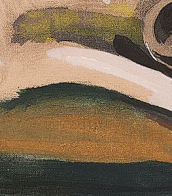
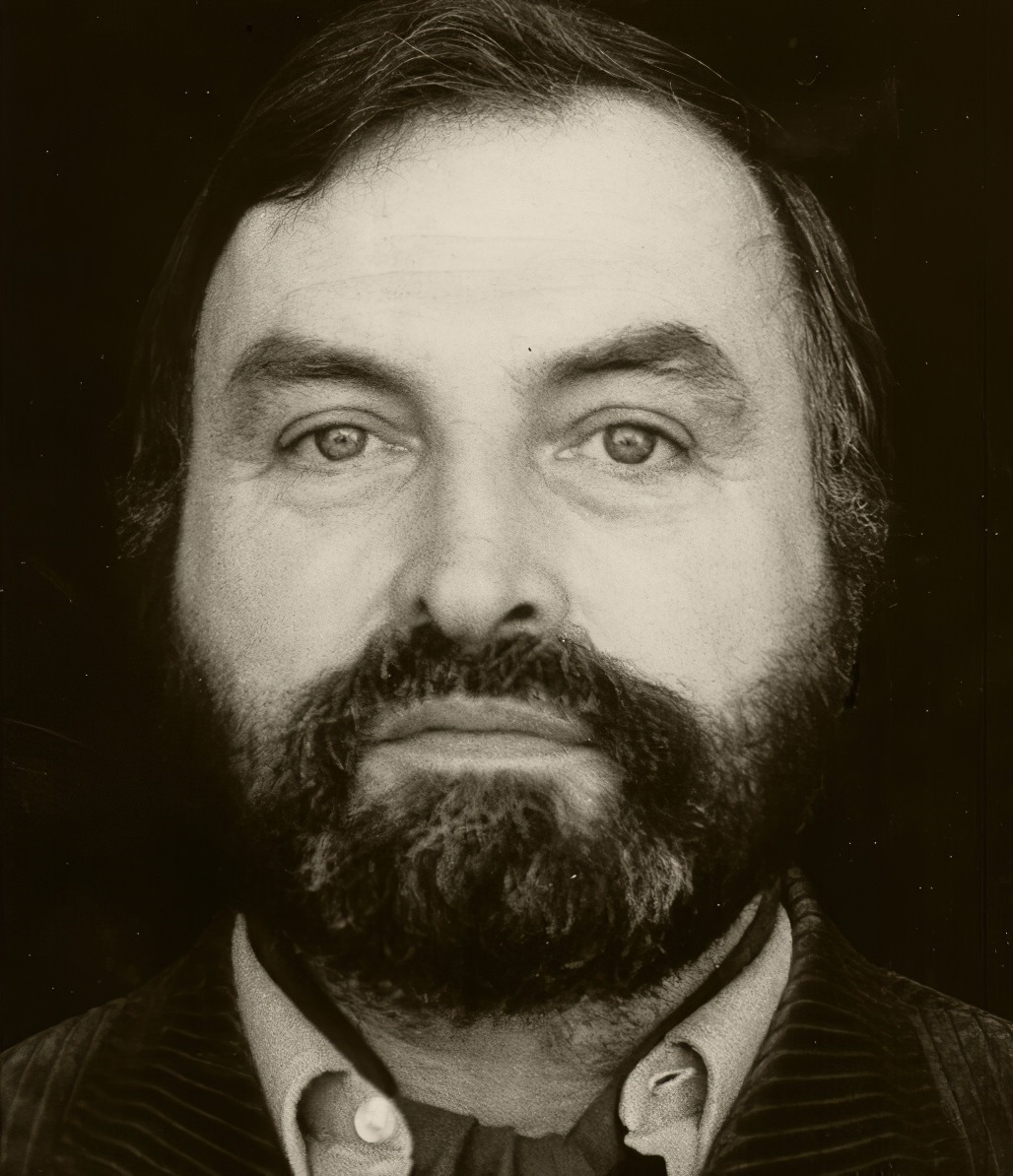
Antonius van der Pas was a German artist of Dutch origin.
Antonius van der Pas was trained as a commercial artist and worked, amongst other things, in the print shop of the Düsseldorf Henkel Company. After the Second World War he entered the Academy of Fine Arts in Düsseldorf where he studied with Wilhelm Schmurr, Werner Heuser and Otto Coester.
In 1949 Antonius van der Paz went to Paris to study, where he met Georges Braque, Pierre Bonnard and Pablo Picasso, influential artists of the time. In 1950 he went to Spain to study, and from 1952-1953 he spent a long time in Granada.
In the 1970s, 1980s and 1990s he travelled extensively around the world, taking part in numerous exhibitions.
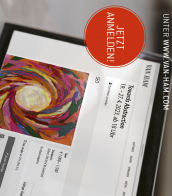
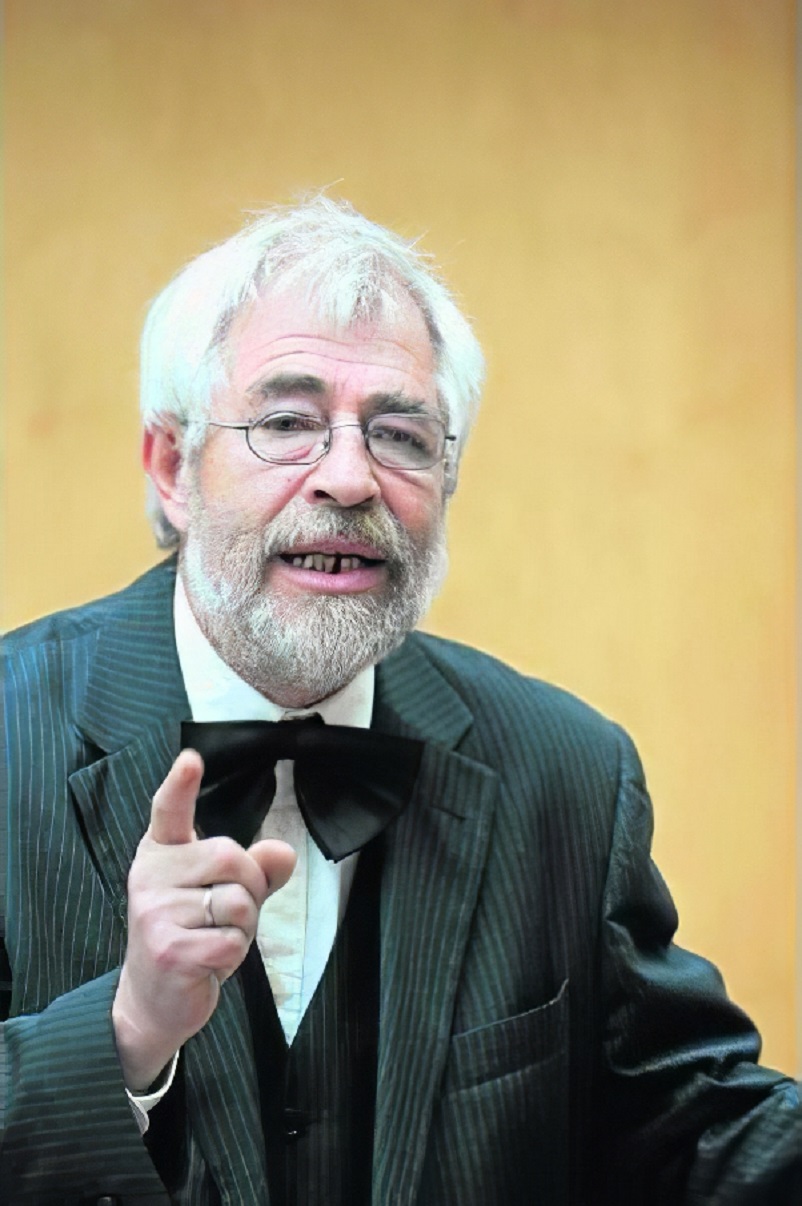
Manfred Dinnes is a German painter, sculptor, writer and art gallery director. He was also cultural editor of Europeonline magazine.
Manfred Dinnes travelled around the world to study other cultures in his youth. In 1973-74 he trained as a church painter-restorer. At the same time he was introduced to the craft of glass painting and glass blowing. Graduated from the Academy of Fine Arts in Nuremberg in 1979, where he studied freehand painting with Gerhard Wendland, Ludwig Scharl and Franz Wintzinger.
Since founding Visual-Art Concepts in 2007, Dinnes has created large sculptures from 7 to 8 metres in height.

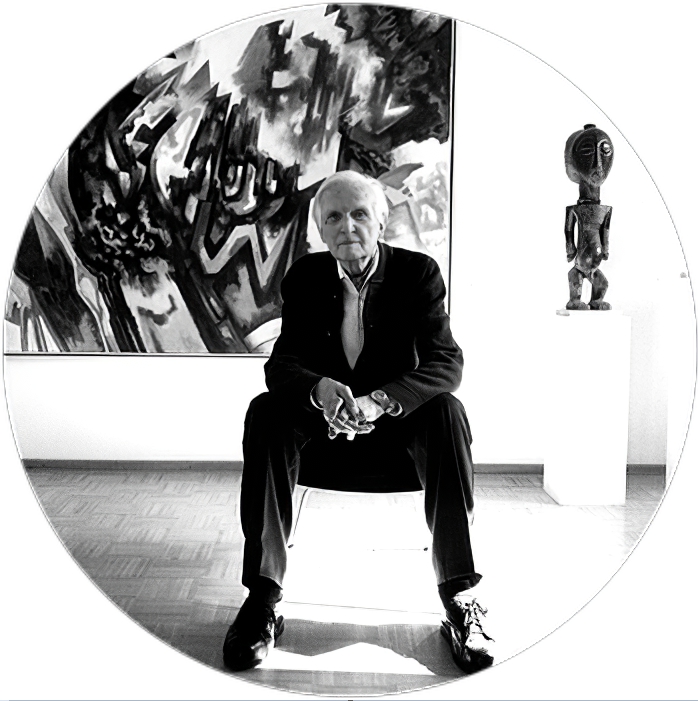
Gerhard Fietz was a German painter, professor and representative of non-objective painting. He is considered an important painter of the second half of the 20th century in Germany.
As a co-founder of the artist group ZEN 49, he opposed traditional representational art and, together with painters such as Willi Baumeister, Fritz Winter and Rupprecht Geiger, developed a style of painting that focused on experimenting with artistic means. Fietz exhibited at numerous national and international exhibitions, including the highly regarded exhibition at the Cercle Volnay in Paris in 1955.
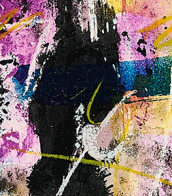

Robert Seidel is a contemporary German artist who works in the fields of experimental film, installation, public art, image-making, performance and sound.


Robert Seidel is a contemporary German artist who works in the fields of experimental film, installation, public art, image-making, performance and sound.
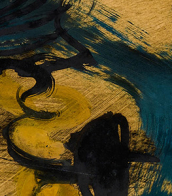

Manfred Dinnes is a German painter, sculptor, writer and art gallery director. He was also cultural editor of Europeonline magazine.
Manfred Dinnes travelled around the world to study other cultures in his youth. In 1973-74 he trained as a church painter-restorer. At the same time he was introduced to the craft of glass painting and glass blowing. Graduated from the Academy of Fine Arts in Nuremberg in 1979, where he studied freehand painting with Gerhard Wendland, Ludwig Scharl and Franz Wintzinger.
Since founding Visual-Art Concepts in 2007, Dinnes has created large sculptures from 7 to 8 metres in height.
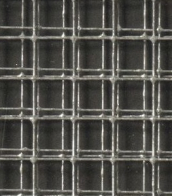

Robert Remsen Vickrey was an American artist. He was known for his meticulously detailed egg tempera paintings, which often depicted dreamlike and surreal scenes.
Vickrey attended the Art Students League of New York and later studied under Reginald Marsh at the New School for Social Research. He began working in egg tempera in the early 1950s and developed a unique technique that involved layering thin glazes of paint to create luminous, almost photographic images. Many of his paintings featured ghostly figures and ethereal landscapes, and were inspired by dreams and his own imagination.
Vickrey's work was widely exhibited in galleries and museums throughout the United States, and he received numerous awards and honors during his career. He was a member of the National Academy of Design and the National Academy of Arts and Letters, and his paintings are held in many important public and private collections.
In addition to his work as a painter, Vickrey was also a teacher and mentor to many younger artists. He taught at several art schools, including the School of Visual Arts in New York City and the Rhode Island School of Design, and wrote several books on egg tempera technique. Vickrey's contributions to the art world have been widely recognized, and his legacy continues to inspire and influence generations of artists.
